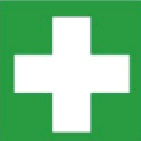Friday, July 14, 2006
Computer Security Primer 101

Practical and invaluable steps to secure your computer today.
1. Change your Windows settings so that you can see the true file extensions. For example, on Windows machines, open Windows Explorer. Under the View menu, select Options. Select "Display the Full MS-DOS path in the title bar." You can also get to this by clicking on My Computer, then View, then Options, then the View tab.
Never click on a file that ends in .exe or .pif or .vbs as these are files that launch programs. Even MS Word .doc files can be programmed to harm your computer, so while you do not need to be paranoid, you do need to be vigilant. Never open a file attachments from people you don't know, or where the email somehow seems strange. Your intuition is probably correct.
2. Create a phony contact record within your email address book. If a worm virus gets onto your computer, it typically heads straight for your email address book. It then replicates itself and sends itself to everyone in your address book, thus sending infected emails to all your friends and associates. Use that fact to alert yourself when/if a virus slips past your anti-virus precautions!
First, open your address book and click on "new contact." In the window where you would enter a FIRST name, type in: 000_ (three zeroes followed by an underscore, which is located next to your zero key). In the box where it prompts you to enter the new email address, type: Wormalert2003@leapmail.net. If your program tells you this is not a valid address just say 'yes' to add it, or click OK.
Here's what you've done and why it works: the "name" 000_ will be placed at the top of your address book as entry #1. This will be where the worm will start in an effort to send itself to all your friends. But when it tries to send itself to 000_ it will be undeliverable because of the phony email address you entered. If the first attempt fails (which it will because of the phony address), the worm goes no further and your friends will not be infected.
Here's the second great advantage of this method: if an email cannot be delivered, you will be notified of this, because you will receive a MAILER DAEMON in your Inbox. So, if you ever get an email telling you that an email addressed to Wormalert2003@alertme.com could not be delivered, you know right away that a worm has infected your system. You can then take steps to get rid of it!
3. Choose an Internet Service Provider (ISP) that offers virus filtering on all email. This means that your ISP should be able to catch and delete messages that have viruses or worms attached to them. Most ISPs will then send notice to you that the email did not get through because of the attachment. For a list of ISPs who provide specialized add-ons such as anti-spam and anti-virus filtering services, go to http://www.choosinganisp.com.
4. Educate other people within your company and/or household how to scan for viruses on the computer. Teach children how to spot suspicious email attachments.
5. Get in the real habit of backing up data. If you have had virus infections in the past, chances are that your backup disks are also infected and need to be scanned for viruses. Better be safe than sorry!
6. Pay attention to your computer. If it starts to act strangely, or does not function in the normal manner, there is a good chance that your computer has become infected with a virus. STOP your work, and investigate it before it gets any worse. Run your virus scan. If you can't find the virus and know you have recent virus dat files ... contact your computer repair/maintenance company to see if they can help you.
7. STOP FORWARDING 'WARNING' EMAILS! There are billions of emails floating around in cyberspace warning of gloom, doom and falling skies. They usually tell the recipient to forward the email to everyone you know. The vast majority of these email alerts are a hoax.
Here is why these are often just as harmful as a virus:
A. After reading a so-called warning email, the recipient may delete legitimate files from their computer. These could be files that actually secure the computer.
B. Repeated, false alarms desensitize the public to the problem of viruses. Cry wolf too many times, and when the real thing comes along, no one knows until the wolf is onto dessert.
C. False alarms cause an overflow of traffic to websites like Microsoft, Symantec, and McAfee. You can check out the legitimacy of a virus by going to http://vil.nai.com/vil/hoaxes.asp and looking up the suspected virus. It will say HOAX if it is not real. This is a great resource for virus information.
8. If you are using Windows XP. Always make sure to have the latest version of the operating system. Even years after it has been released, software testers, engineers and hackers continue to find security flaws within the XP operating system. Microsoft has set up a program in which it will release fixes, or patches, to XP. You can set your computer to either look for updates automatically (highly recommended) or you can check for updates manually. To verify and/or change your settings, look for 'Windows Updates' from your Start button. ADD TO: Del.icio.us, Digg, Technorati, Blinklist, Furl, Newsvine,
![Validate my RSS feed [Valid RSS]](http://computerguyslive.com/images/valid-rss.png)